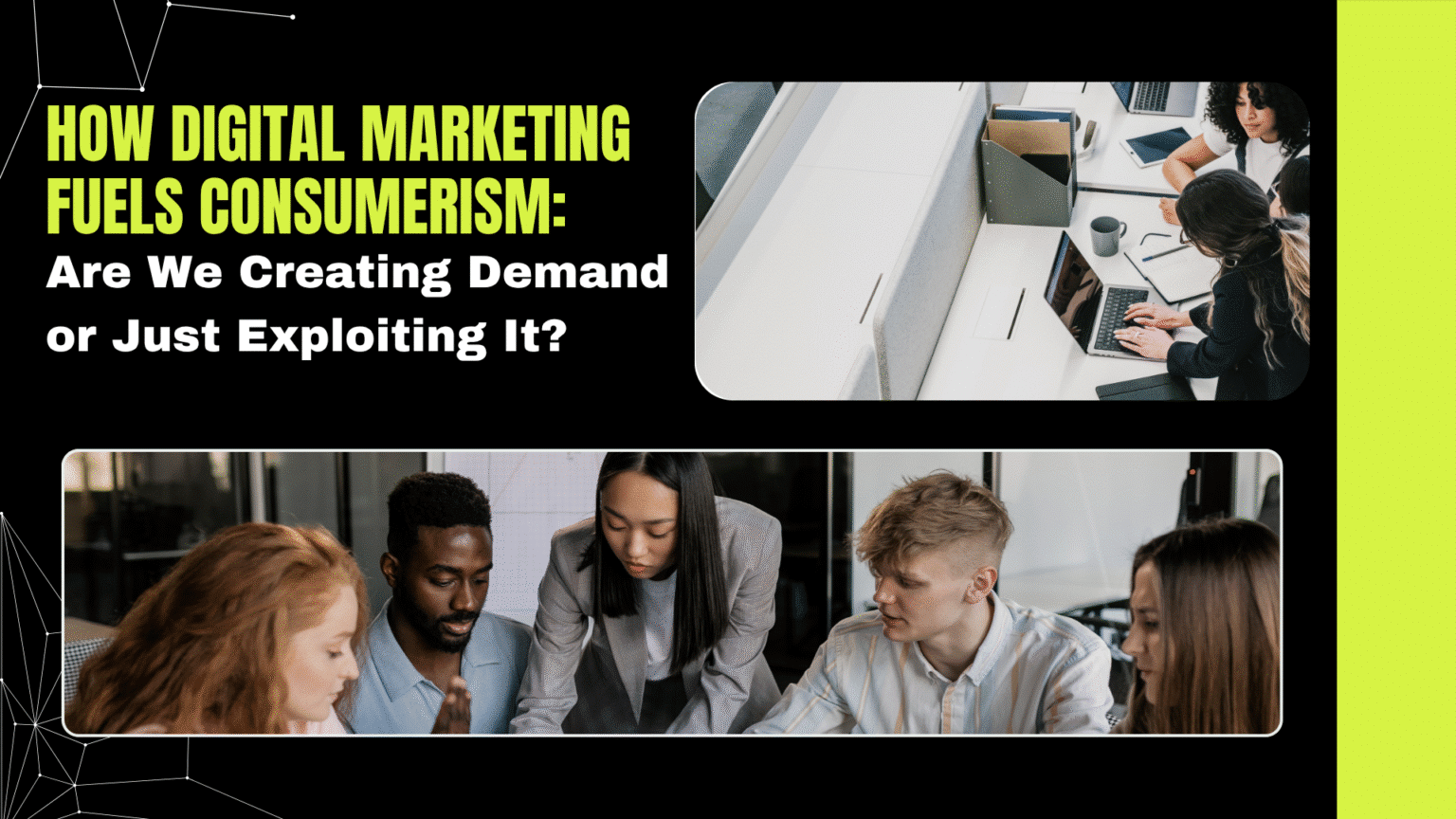
The Age of Digital Influence: Are Marketers Shaping Desires or Triggering Impulses?
In a world where every scroll, swipe, and click is tracked, digital marketing has become one of the most powerful tools to influence human behavior. Brands are no longer waiting for consumers to walk into stores; they are already in their homes, pockets, and minds—thanks to smartphones, cookies, and algorithms. While digital marketing has empowered businesses to grow faster and reach wider audiences, it has also intensified consumerism by turning browsing behavior into purchase decisions. The real question is: are marketers fulfilling demand—or are they creating it artificially and exploiting psychological triggers?
Key observations:
- Brands use personal data to anticipate wants before they are expressed.
- Emotional triggers like fear of missing out (FOMO), scarcity, and urgency are exploited to drive impulse buying.
- Influencer marketing often glamorizes unnecessary consumption under the guise of lifestyle inspiration.
Consumer Psychology Meets Data Science –
Modern digital marketing doesn’t rely on guesswork—it runs on deep psychological insights and real-time behavioral data. Every user interaction—from likes and shares to dwell time—is analyzed to build a psychographic profile. This allows marketers to micro-target consumers not just based on demographics, but on how they think and feel. The result? Personalized experiences that make buying feel irresistible, even when the product isn’t essential.
Marketers now understand which colors increase conversions, which words trigger emotions, and how long it takes before someone is likely to “break” and buy. Retargeting ads, dynamic content, and marketing funnels are all engineered to keep consumers moving toward the checkout button. While these tactics can be effective for genuine needs, they can also promote overconsumption, especially when applied to fast fashion, beauty products, or tech gadgets.
Marketing tactics that exploit behavioral science:
- Scarcity bias (“Only 2 left in stock!”)
- Loss aversion (“Sale ends in 1 hour—don’t miss out!”)
- Social proof (“1,000+ people bought this today!”)
- Anchoring effect (showing expensive products first to make others look cheaper)
The Illusion of Choice: Are Consumers Truly in Control?
One of the more subtle ways digital marketing fuels consumerism is by shaping what consumers see in the first place. Platforms like Google, Facebook, and TikTok filter what users are exposed to based on their behavior, essentially creating a “walled garden” of interests. While it feels like consumers are exploring freely, they’re often navigating a curated feed designed to keep them engaged—and consuming.
Over time, this curated exposure can reinforce desires people didn’t originally have. For example, someone casually looking at home decor might suddenly be served dozens of ads for expensive furniture, influencing their sense of what is “normal” or desirable. The line between need and want becomes blurred, and consumption becomes less about utility and more about identity, status, and self-image.
Who Benefits? And Who Pays the Price?
It’s undeniable that businesses benefit enormously from digital marketing. E-commerce brands have grown into global giants in a matter of years. Influencers earn full-time incomes through brand sponsorships. Social media platforms monetize every user interaction. But the real cost often falls on consumers—financially, emotionally, and environmentally.
People are increasingly spending beyond their means, drawn by buy-now-pay-later options and psychological tactics. At the same time, digital fatigue and regretful purchases are rising. Many consumers report feeling manipulated or overwhelmed by the constant barrage of ads. On a broader scale, increased consumption also means more waste—especially with fast fashion, disposable tech, and short-life-cycle products.
Consequences of unchecked digital consumerism:
- Rising credit card debt and financial insecurity
- Short-lived satisfaction and buyer’s remorse
- Environmental degradation due to overproduction and waste
Can Ethical Marketing Exist in a Digital-First World?
Despite the challenges, ethical digital marketing is not only possible—it’s essential for long-term sustainability. Brands can still be profitable while being conscious of the impact their campaigns have on consumer well-being. Transparency, honesty, and value-driven storytelling are key pillars of this approach. Instead of manipulating emotions for conversions, ethical marketing seeks to inform, educate, and genuinely improve lives.
The shift also requires consumers to become more aware of how digital platforms shape their buying behavior. Tools like ad blockers, conscious spending apps, and digital detoxes can help restore balance. But the responsibility lies with both marketers and platforms to design experiences that respect users’ autonomy—not just exploit their impulses.
Principles of ethical digital marketing:
- Promote mindful consumption over urgency
- Avoid manipulative language or scarcity tricks
- Be transparent about data usage and personalization
- Support diversity, accessibility, and inclusivity in campaigns
Conclusion –
Digital marketing has undoubtedly transformed how products are discovered and sold. It has helped small businesses grow, allowed consumers more convenience, and opened creative avenues for brands. But it also walks a fine line between persuasion and manipulation. When the goal becomes maximizing conversions at any cost, it can exploit psychological vulnerabilities and accelerate a culture of overconsumption.
Marketers must ask themselves: Are we solving problems, or inventing them to sell more? The future of digital marketing shouldn’t just be about who clicks and buys—it should also be about who feels empowered, informed, and respected in the process.


